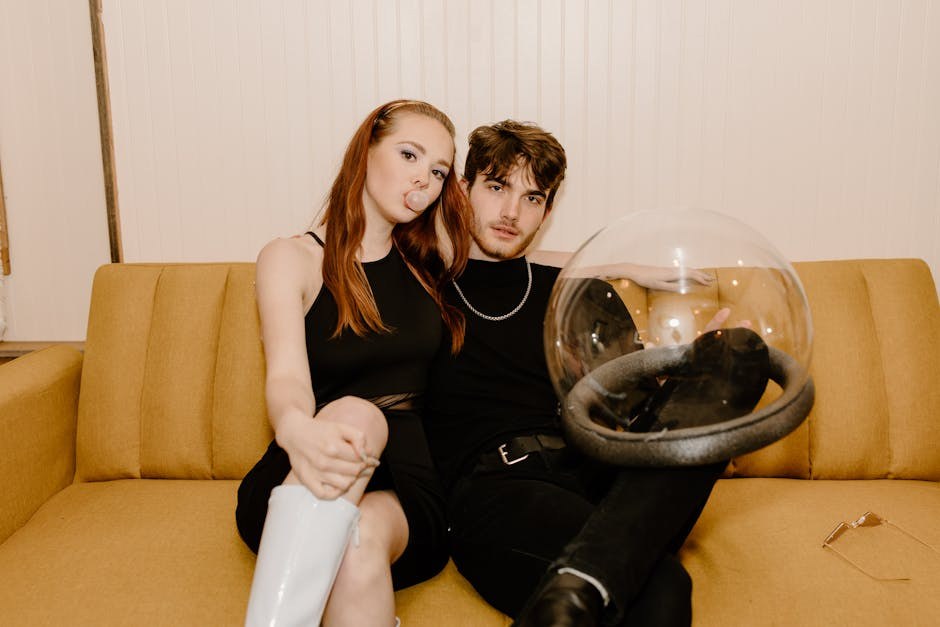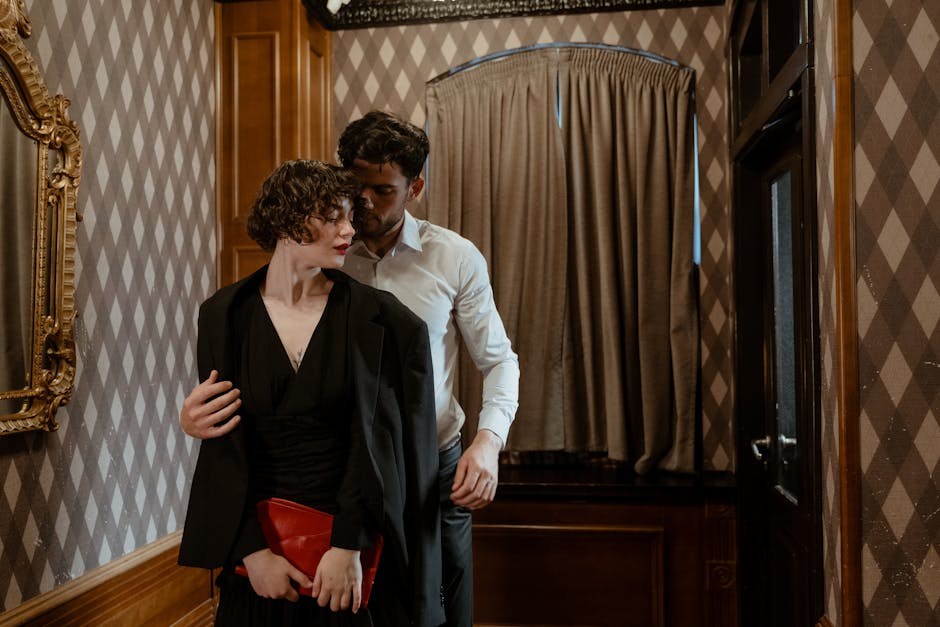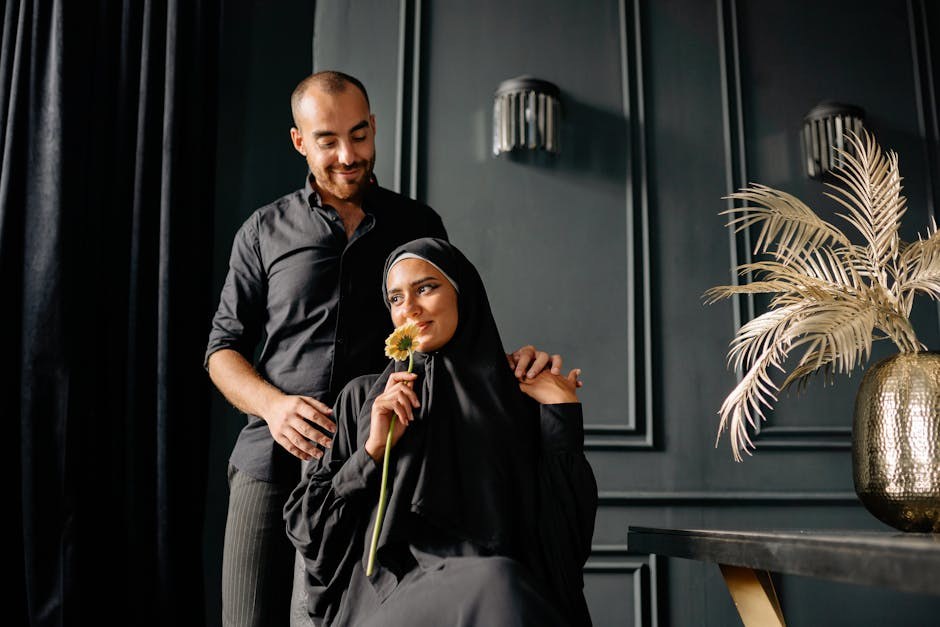Some messages don’t need words – a single look can tilt the entire conversation in your favor. That look is widely known as bedroom eyes, a relaxed, slow-burning gaze that hints at desire without spelling anything out. This guide reframes the idea for modern flirting, explaining what the expression communicates, how to shape it with subtle body language, and ways to enhance it with grooming and makeup. You’ll also learn timing, context, and pacing so your bedroom eyes feel effortless rather than theatrical.
What people actually mean by bedroom eyes
When people say bedroom eyes, they’re describing an unhurried gaze marked by softened eyelids and a calm facial tone. The eyelids sit slightly lower than usual, the stare lingers for a second longer, and the overall expression suggests warmth rather than tension. Because the look reads as relaxed – not startled or defensive – it creates a private channel of attention between you and your person of interest. Bedroom eyes whisper “I’m thinking of you” without a single syllable spoken.
Crucially, bedroom eyes are not a glare, not a squint, and not a frozen stare. The energy should flow – a lift at the corners of the mouth, a micro-tilt of the head, an inhale that softens the shoulders. It’s an invitation, not an interrogation.

Signals that shape the message
Bedroom eyes communicate most clearly when the surrounding cues are congruent. Consider how these elements work together to amplify the gaze:
- A gently heavy-lidded look that relaxes the brow without drooping into tiredness.
- Breathing that slows your movements – quick actions clash with a languid stare.
- Subtle attention to the mouth: a quick glance at their lips, then back to the eyes.
- A small, knowing smile that appears and fades like a secret.
- Playful fidgets that signal interest, such as tucking hair behind the ear or smoothing a collar.
- Turning the body slightly toward the person so the torso and feet agree with your eyes.
All of this frames bedroom eyes as intentional yet effortless. If your posture says “I’m open,” your gaze lands more clearly as warmth rather than confusion.
Why the look feels magnetic
Part of the appeal is simple: relaxed features read as comfortable and intimate, and that calmness is contagious. Lowered lids soften sharp angles in the face, making the gaze less confrontational. A slower blink rate and small pauses between glances add to the quiet intensity. In short, bedroom eyes nudge the moment toward closeness – and that sense of closeness is what flirts so effectively.

Practice without the pressure
Rehearsal might sound unromantic, but it’s the fastest way to make bedroom eyes feel natural. Use this short routine to build muscle memory and confidence.
- Release the forehead. Exhale and imagine smoothing the brow from the center outward. If your eyebrows jump when you make eye contact, practice keeping them still for a few breaths.
- Drop the lids a fraction. Think “soft focus,” not sleepy. Aim for an easy baseline you can hold while talking and listening.
- Add a timed glance. Look at your own mouth in the mirror for a beat, then drift back to your eyes. That rhythm translates well when flirting.
- Shape the smile. Let a hint of a smile lift one or both corners of your mouth – just enough to be seen, not enough to look posed.
- Breathe into stillness. Count a slow three on the inhale and four on the exhale; the calmer your breath, the smoother your bedroom eyes appear.
Repeat until the expression feels like part of your resting repertoire. The goal is a gaze you can summon without fuss – just a tiny cue and the look appears.
Makeup that amplifies the effect
Cosmetics don’t create attraction on their own, but they can emphasize the structure that makes bedroom eyes pop. Work with tones that echo your natural shadows so the result looks like you, only more defined.

- Prep and prime. Even out the eyelid tone with a light base so blending stays smooth. A soft matte finish prevents glare that can flatten bedroom eyes on camera or in bright rooms.
- Sketch the outer wing. With a small angled brush and a medium-dark neutral shade, map a short wing at the outer corner, following the line where your top and bottom lids meet. Keep pigment concentrated close to the lashes.
- Blend the top edge. Smudge the upper line into the lid so the color fades inward, but leave the lower edge cleaner to anchor the shape – that contrast makes bedroom eyes look elongated.
- Deepen the lash line. Press a darker tone along the outer third of the upper lashes. If you use liner, keep it thin and tight; the aim is definition without harshness.
- Balance the lower lid. Shade the outer quarter under the eye with the same medium tone. Stop well before the inner corner to avoid closing the gaze.
- Lift with mascara or a half-lash. A half strip or a few individual clusters at the outer corner accentuate the gentle wing that makes bedroom eyes read as sultry.
- Finish the face. Keep lips soft and touchable – a satin finish works well – and use a hint of warmth on the cheeks to keep the overall effect lively rather than severe.
If you prefer minimal makeup, curl the lashes and groom the brows. Clean structure plus a calm gaze often outperforms heavy pigment for bedroom eyes in daytime settings.
Grooming tips for every face
Bedroom eyes benefit from neat framing. Well-shaped brows set the stage, and hydrated skin keeps the look fresh instead of fatigued.
- Trim stray brow hairs but preserve your natural arch – overly thin brows remove the shadow that helps bedroom eyes feel dimensional.
- Condition lashes and comb them upward. A little separation makes the gaze read as clearer and more intentional.
- Use a touch of under-eye brightener if darkness pulls the look toward “tired” rather than “sultry.”
- Keep lips smooth. Since your gaze often flicks to the mouth, chapped texture can distract from bedroom eyes.
Body language that matches the message
Let the rest of your posture echo the calm confidence of bedroom eyes – the more harmonious your signals, the more readable your interest becomes.
- Uncrossed openness. Keep arms and legs uncrossed to avoid blocking the path between you and the other person.
- Angular alignment. Angle your torso slightly toward them; the shift is subtle but signals attention.
- Measured pacing. Move more slowly than usual by a tiny margin – a relaxed sip, a thoughtful head tilt. Speed communicates nerves; unhurried motion strengthens bedroom eyes.
- Micro-distance. If the vibe is good, reduce distance by a small step. Proximity turns the gaze from abstract to intimate.
- Listening face. Keep your features responsive. Nodding lightly and mirroring expressions make bedroom eyes feel warm rather than aloof.
Timing and rhythm: how to look, then look away
Great flirting is musical. Bedroom eyes need rests and repeats to feel natural. Try this simple pattern while chatting:
- Hold steady eye contact for a heartbeat – about the length of a calm inhale.
- Flick your gaze toward their mouth; pause for half a second.
- Return to the eyes and let a small smile bloom, then fade.
- Look away to your drink or the table, as if resetting, before circling back to eye contact.
This rhythm gives the other person space to respond while keeping the pulse of bedroom eyes alive in the background.
Do’s and don’ts that keep things clear
- Do keep your shoulders loose; tension around the neck can turn bedroom eyes into a stiff stare.
- Do match your tone of voice to the mood – slower, slightly lower, and warm.
- Do allow breaks in attention so the moment can breathe.
- Don’t avoid eye contact entirely; bedroom eyes need connection to be understood.
- Don’t overplay the pout. A hint can be charming, but exaggeration risks parody.
- Don’t cross your arms or hide behind objects; barriers blur the signal.
Reading the room – consent, comfort, and kindness
Flirtation should feel good for both people. Bedroom eyes are powerful precisely because they’re gentle. Watch for cues – a genuine smile, a mirrored lean, a returned glance – that show your look is welcome. If the other person seems uncertain, ease off and shift to friendly conversation. Interest is clearest when it’s mutual, and kindness keeps the exchange bright.
How to adapt bedroom eyes to different settings
Context shapes intensity. Adjust your volume so the gaze matches the moment.
- Across a room. Use a slightly longer hold, then break with a half-smile. Repeat only once or twice before initiating or inviting conversation.
- In conversation. Thread bedroom eyes through listening: hold, flick to the mouth, return, then laugh or respond. Keep it playful.
- On a casual date. Dimmer light allows a slower rhythm. Sit at a slight angle so you can glance sideways – that sly turn flatters bedroom eyes.
- On camera. Lower your chin a touch and look just below the lens for a more intimate feel. Relax the jaw so the expression stays fluid.
Common mistakes – and easy fixes
- The stare-down. If you never look away, the gaze can feel competitive. Fix it by adding brief, deliberate breaks; the return is what reads as flirtatious.
- The sleepy slump. Over-relaxed lids plus slouched posture signal fatigue. Keep posture buoyant to frame bedroom eyes as alert and inviting.
- The mismatched face. A tense jaw undermines a soft gaze. Unclench, exhale, and let the lips part before you look.
- The racing blink. Rapid blinking shouts nerves. Slow your breath – breath sets the tempo for bedroom eyes.
- The overpainted eye. Heavy liner that circles the entire eye can shrink it. Concentrate depth on the outer third so bedroom eyes stay elongated.
Mini “scripts” you can try
Think of these as short patterns you can adapt to your style. They keep bedroom eyes natural by weaving them into conversation.
- The sip-and-smile. Look at them while you raise your glass, hold the gaze during the sip, glance at their mouth as you lower the glass, then smile before you speak.
- The over-shoulder tease. Turn your head to listen to a friend, then look back over your shoulder with bedroom eyes and a soft grin – like you couldn’t resist returning.
- The shared secret. React to something funny with a quick inward laugh, then send a low-lidded glance that lingers a beat longer than usual, as if you’re sharing a private joke.
- The quiet hello. Before greeting, meet their eyes, soften the lids, let a micro-smile appear, then say hi in a slower, warmer voice.
Building your personal look library
Not every version of bedroom eyes suits every face or setting. Create a small menu of expressions so you can pick the right one in real time.
- The playful flicker. Fast transitions and quick smiles – great for daytime and lively spaces.
- The anchored linger. Longer holds and subtle head tilts – better for quiet corners and dates.
- The half-profile glance. Face slightly turned away, eyes sliding back – perfect when seated side-by-side.
- The soft-focus listen. Warm attention while they speak – ideal for deepening connection mid-conversation.
Rotate through these until one feels like your signature. When you know your favorites, bedroom eyes stop feeling like a trick and start reading as your natural vibe.
For men, women, and everyone in between
Bedroom eyes are human, not gendered. The same principles apply to any face – relaxed lids, patient timing, and harmonious body language. If you want a more traditionally masculine read, minimize overt pouting and keep the mouth relaxed with a slight smirk. For a more traditionally feminine read, allow a softer smile and a touch more head tilt. Either way, keep intention kind and playful, and let your curiosity guide the rhythm.
From first glance to green light
Use bedroom eyes as a bridge, not a destination. Once the look is returned – maybe they mirror your softened gaze, maybe they lean in – step through with a simple opener. Ask a question about the music, the menu, or the moment you’re sharing. The gaze sets the tone; your words carry it forward. When the energy is mutual, bedroom eyes feel less like theater and more like a natural reflection of the spark between you.
Troubleshooting nerves on the spot
Butterflies can turn bedroom eyes into blinking contests. If you feel jitters rising, use a quick reset:
- Drop your shoulders and let your hands unclench under the table or at your sides.
- Inhale for three, exhale for four; the longer exhale prompts calm.
- Refocus on one sensory detail – the warmth of the glass, the thrum of music – before meeting their eyes again.
These tiny resets keep your attention present so bedroom eyes come through as steady and sincere.
Putting it all together
Here’s a simple sequence you can adapt anywhere: you notice someone you like; you allow a relaxed inhale that softens your face; you meet their gaze with bedroom eyes for a heartbeat; you glance at the mouth; you return to the eyes with a small smile; then you look away, giving the moment room to grow. If the interest is mirrored, you reengage with the same rhythm and let conversation take root.
Ultimately, the magic of bedroom eyes is less about technique and more about presence. The look works because it says, without speaking, “I see you.” When that message is honest, the rest – the tilt, the timing, the flutter of a smile – arranges itself around the truth you’re already feeling.